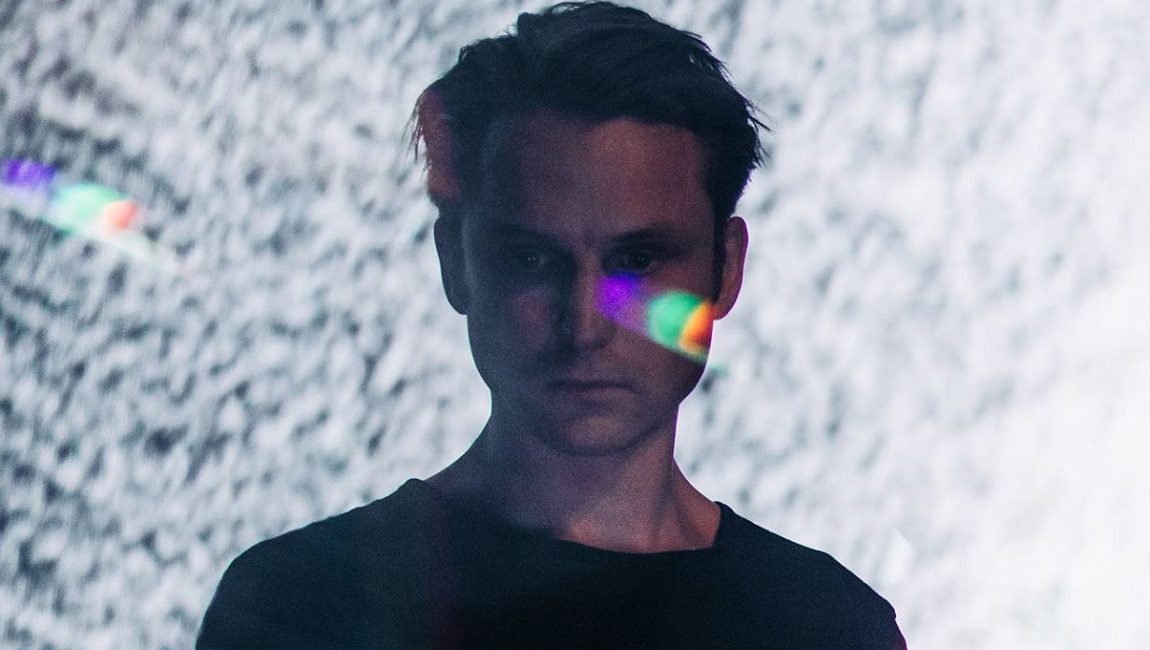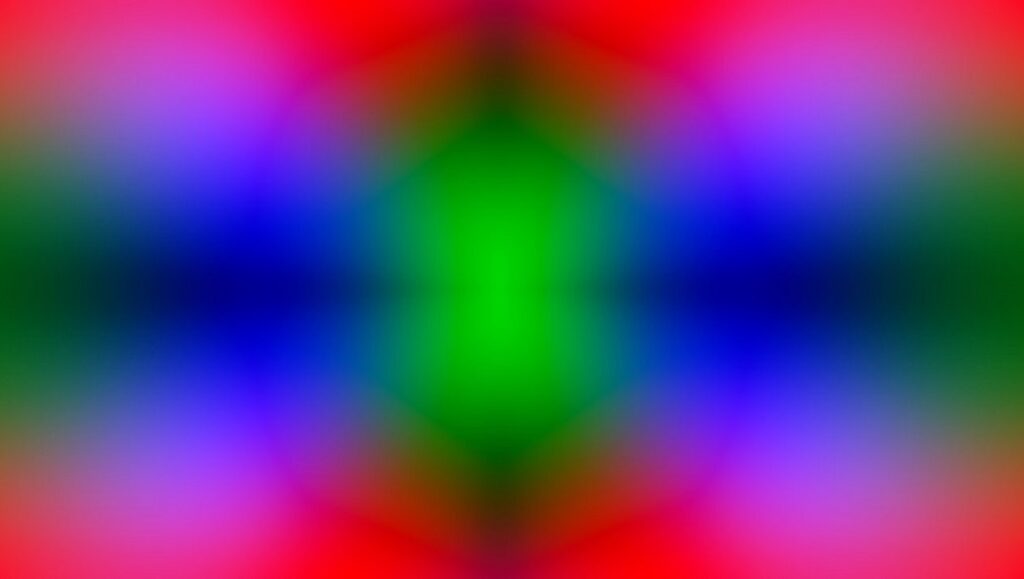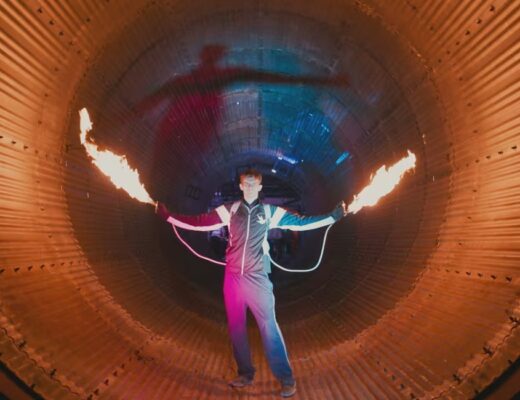After a prolific run of eye-shredding digital shorts produced throughout the 2010s, Berlin-based visual artist Rainer Kohlberger has begun touring his first feature-length project, Answering the Sun. It debuted at this year’s International Film Festival Rotterdam and, much like his previous work (It has to be lived once and dreamed twice and Keep That Dream Burning), concerns itself with cinema’s inherent visual and aural properties — color, light, sound, and rhythm — once they’ve been pushed to their most extreme states of being. This latest is more massive and far more maximalist than anything Kohlberger’s attempted before; the first time I watched this was on my roommate’s (relatively new) Roku TV, and I legitimately thought the flat-screen was about to implode. After a theatrical screening a few days later — which helped to underscore what an immense technological undertaking the film is — it really felt like I had stared into the sun for far too long. Here’s hoping an eventual third and fourth viewing won’t cause permanent eye damage.
I had the pleasure of communicating with Kohlberger about Answering the Sun after this second viewing, along with asking about his artistic influences, his current relationship with the sun, and what it means for a film to “hurt” someone.
The title of your latest feature is fascinating, and for me it seems to suggest that you’re engaging in a one-on-one dialogue with the greatest source of energy for the Earth. What question or query from the sun do you hope to answer with this piece?
Ever since I watched Aronofsky’s Pi multiple times in the cinema as a teenager, it became one of my favorite films back then. That catchy monologue from the protagonist sticks in my mind, where he says: “When I was a little kid my mother told me not to stare into the sun, so once when I was six, I did.” I think it stayed with me because it conveys a sense of early rebellion against authority; a call to follow your childish fascination about the world and use the same underlying impulse to transgress what you already know. Something that kids naturally do all the time, like staring at the sun or pinching their own eyes until they can see black spots in their vision. This is a way to learn about your body and to find out who you are in this world, where it starts and where you begin. Some of these simple assumptions still reside in my artistic practice. When I came up with this title, I first thought it might be a bit too obvious, but then I quickly accepted it for its ability to describe that pristine dialogue you can have with the immense bright light flickering in front of you.
I’m curious to know how the creative process for this piece developed, considering this is your first feature-length work. Did you originally set out to make something this comparatively lengthy, or did it mutate into something longer over time from a smattering of different ideas?
The whole film evolved quite organically. A couple of years ago I started to perform live on stage, where a lot of similar concepts are prevalent that can also be found in my films. While most of my former films are shorter pieces of up to about 15 minutes, a live performance usually lasts between 30 to 45 minutes. That’s where I learned how to sustain abstract visuals and sounds for a longer period of time, and I realized a while ago that this could also be possible in the cinema. The beginning of this film was already part of a live performance, where I often experiment and try out new things and include rough sketches every time I play. Based on this ongoing process of constantly generating new sounds and images, I came to the conclusion that I wanted to assemble a longer piece for the cinema. At one point I decided to create exactly one hour of film containing several movements that are all woven together by the simple anticipation of creating illusions for eyes and ears with all the tricks I have learned in the past. Visually, everything is linked by the circular structures in all of the segments.
Building off of that last question, how naturally were you able to connect each of Answering the Sun’s individual segments? The piece has a concise flow to it, so it seems intuitive to me on some level. Yet, as I noted, there’s also a strong sense of spontaneity to the way the patterns and images develop.
I guess this sense of spontaneity you mention derives from the basic techniques that I use to create my films. The process is more akin to the way music is composed than working with the camera. The computer has always been my main instrument, and I use code to generate the images and sounds. The kind of minimalistic, flat images you can see in Answering the Sun are brought to life by a visual coding environment that is running in real-time. That means, for example, that when I change any of the animation parameters of the various pulsing and flashing elements, it becomes immediately visible on the screen, just like it would be seen in the cinema. It’s very similar to the way modular synthesizers work — the process is basically the same except that instead of hardware, the whole principle is simulated in software. This real-time environment is most important for the first steps into a new project, where I create lots of little sketches in an ongoing daily mode of experimentation. Later, when I think I have enough, I try to find which of those singular pieces fit together and start to blend them into bigger structures and movements. In this part of my compositional process that sense of flow is introduced, as I hardly ever use sudden changes but aim to create movements of constantly evolving and morphing images over time.
The relationship of sound to image in the cinema always seems to be a subservient one, yet your work has a strong, respectful interplay between these two forces. When approaching the soundtrack, how important is it for you to have each of these elements complement one another and how do you accomplish this symbiosis?
In my work, image and sound are created on similar aesthetic principles. They are both “flat,” sustain a single maxim over a long period, and yet slowly evolve into a different form. I am always working on the sound only after the image is done though. Therefore, the sound has to follow the visual movements that are already established, but I always try to theoretically make them work each on their own — if you were to watch the film silently, it should make sense, and also to listen to the soundtrack without seeing any visuals should be like listening to a record. One of the great wonders of cinema is that if perceived together, the magic happens and something more than the sum of its parts emerges. I rely a lot on the synaesthetic capabilities of our brains. It naturally connects what’s passed down through the single nerves all the time. I think stimulating them on an intense level like I do makes that sense of synchronicity very evident.
You’ve been consistently producing boundary-pushing work for the better part of a decade now. When approaching a new project, how much would you say you rely on your instinct at this point versus how much comes from learned experience? Or maybe the better question might be, how do you conceive of the relationship between these two forces in the creative process?
From what I’ve learned, the term instinct (or also a feeling) simply relates to a way slower kind of learning that also takes a very long time to develop, and knowledge only emerges over many human generations. Therefore, this question adds to what I talked about above in a sense that I think it is important one does the things they are good at (that would be the instinct part) but then of course always challenge yourself and follow your newly found interests. In my case, which I guess is very common for an artist, that is to have many different notes on things I’m interested in and constantly add bits and pieces to it. At some point, there’s this sudden spark of an idea or the fascination about an aesthetic form that I want to approach further with the feeling that it is coming out of “nowhere,” but in fact one has been thinking about it on a different, subconscious level for a long time.
Who are some of your artistic influences? Paul Sharits and Tony Conrad seem like obvious touchstones because of their interest in the flicker effect, and I noted Bill Brand in my review as well. But there’s a wider spectrum of artists who have engaged in flicker effects in cinema, and I’m sure you have more than just those few names and other sources of inspiration.
These days most of my inspiration comes from reading and traveling. Initially, I guess the most important inspiration for me becoming an artist working in film was the long history of Austrian experimental film. It goes back to the Viennese Actionists and continues with Peter Kubelka, Martin Arnold, Gustav Deutsch, and Peter Tscherkassky. I learned early on that there are films entirely created without camera and use found footage and find their own structural language. I knew that this is the kind of filmmaking I wanted to approach myself. Maybe club culture also influenced me, as visuals were popping up everywhere in the 1990s and I saw a lot of experimental electronic acts. I also should name Iannis Xenakis, who I think is the most important composer of the 20th century and hasn’t stopped leaving me in awe for the absolutely beautiful and groundbreaking work he did.
You have some rather specific instructions for those who view Answering the Sun in a non-theatrical setting. Can you talk about the importance of venue and exhibition for a work like yours in this age of at-home streaming?
My film has to be seen in a theater, there is no other way. The notes are really just for reviewers and programmers that have to watch the film in advance. If I wouldn’t have written precise instructions to recreate a theatrical environment in your own home, they might just watch it like any other film on their computer monitors and unfitted speakers which might lead to a misunderstanding of how to perceive this film. I’ve never had a TV screen, but always have had home video projectors. Combined with a good sound system and a way to darken the room, you can almost recreate a cinema. I say “almost” because, of course, the social gathering in a shared space is missing, which is very important for me to emphasize. Most of the film was finished during the pandemic, and I deliberately wanted to double down on creating a work for the cinema that is impossible to watch online. I think my work indirectly hints to the importance of the common experience in the cinema as it is possibly perceived quite differently by everyone. The moments of being together after the screening and talking about what just happened are beautiful and wouldn’t happen in online spaces the way they do in the physical world. That’s also the reason I am not interested in any kind of VR technology where you get locked out of your sense of others right next to you.
This is a very intense piece of work, one that could even cause physical pain for some viewers. But there’s also something undeniably gratifying about the journey one takes through all of this transitory discomfort. Do you believe that pain and pleasure are part of the same continuum, or perhaps otherwise linked in some way?
I think this is best answered along the old assumption of light and darkness necessitating each other to even make sense on their own as an idea. I know that my work, for the most part, is not “easy” or “light” but can be rather intense and demanding. This is true for a lot of art that I am personally interested in, and it derives from a fundamental interest in everything that lives on the fringes of art and society. This has to do with an abstract understanding of how I assume we comprehend the world we live in. If you put everything on a spectrum, easily digestible pop culture that is based on the same simple formulas that are repeated all over again is therefore not noisy at all, per se. Most people are fine with that and don’t even think about it. But I have always been interested in opening up my eyes and ears for the unknown. The interesting thing is that new artworks can’t be too alien to be appreciated by you, but have to exist on a threshold of repeating something familiar that you already knew about before and blend it with something unexpected in a new way. So the whole process of reception is quite fuzzy and based on a journey everyone takes on their own. For someone listening to harsh noise for the first time, they probably wouldn’t accept it as music at all. For others, it can be the most beautiful thing in the world. I definitely try to establish a kind of interplay between challenging and soothing sounds and images in my work. It wouldn’t be possible to just sit back and be on the receiving end of watching my film. You have to actively engage with it by opening yourself up to a kind of sensory overload. If you are able to do that, it’s possible to “zone in” and invoke a kind of experience where you are very present in the moment but also dissolved in a flowing heap of aesthetics at the very same time.
Artist Biography: Rainer Kohlberger is an Austrian-born Freelance Visual Artist living in Berlin. His work is primarily based on algorithmically generated graphics that are exposed in live performances, experimental films, and installations. For his work field he won the ZKM App Art Award for artistic innovation. He received the Crossing Europe Local Artist Award 2013 for his work humming, fast and slow. (Courtesy Six Pack Film)









